How to Force Empty Trash on Mac| 4 Fixes
Any unnecessary files that you remove from your Mac's hard drive will be relocated to the Trash bin and continue to occupy some space on your computer. We can empty the Trash bin to erase these unneeded files. However, you can see error messages stating that Mac Trash won't empty for known or unknowable causes. Here are a few fixes for "how to force empty Trash on mac" that you may find helpful.
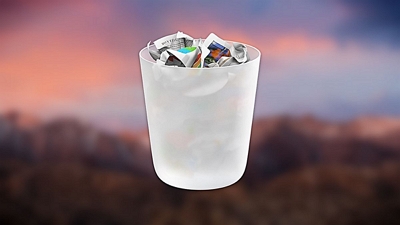
Why You Need Force Empty Trash on Mac
Understanding where is Trash on Mac and the causes is crucial before learning how to make macOS force empty the Trash. The critical catalysts for doing this are the following.
Users' privacy
Users occasionally need to remove their personal or sensitive stuff from their Macs. Thus, forcing empty Trash on Mac and wiping the private data can prevent someone else's future access.
User's security
For your security, you should also be sure to force empty the Trash from your Mac if you want to sell your Mac. Because simply removing your files to the Trash Bin is the risk of a data breach.
More space
Removing unnecessary stuff from the Trash could free up space if the Mac runs low on storage. Force clearing the Trash Bin on Mac is a fast way of loosening the system's hold.
Speed up
Bucks of extra files and data will slow down your macOS. Therefore, you can hasten your system's processing by wiping useless stuff into the Trash Bin or formatting Mac to make it faster. Then empty the Trash, and you can rocket your system speed.
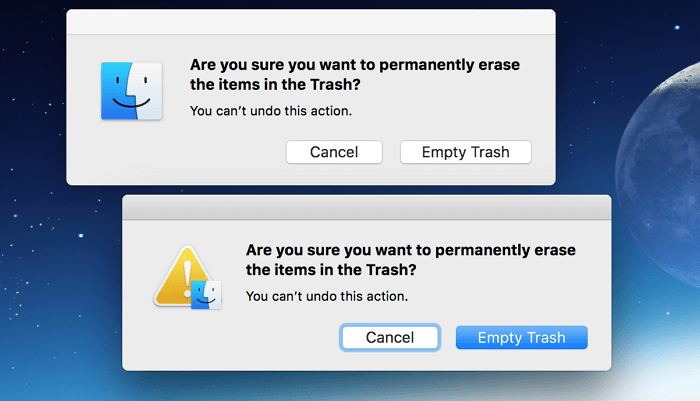
5 Correct Methods to Force Empty Mac's Trash
Whatever the cause, learning how to force empty Trash on a Mac is simple if you perform it the right way. You can utilize the following five methods to force-empty the Trash on a Mac.
Fix 1. Use the Terminal to empty Trash on Mac
it's a common practice among Mac users to delete or recover deleted files from Mac Terminal. Suppose you want to force empty Trash with Terminal on Mac. In that case, the following procedures seem more successful and efficient for those running Big Sur, Monterey, or even higher editions such as the latest OS Ventura. However, exercising caution when choosing a terminal would be best. On a Mac, typing the incorrect command could delete much more than just the Trash.
Step 1. Launch Terminal on your Mac. Accessing Spotlight and searching for Terminal from here is the quickest way.
Step 2. Type "sudo rm -R", then add a space (do not hit the Enter key at this point).
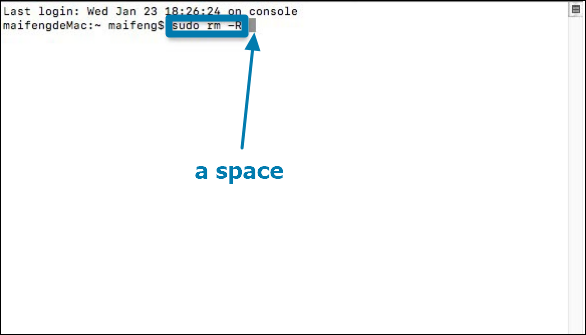
Step 3. Select all the items you wish to empty the Trash and click the trash symbol in the dock. Drag the folder and file to the Terminal window. Then press the Enter key.
Step 4. Type your administrator password. And the password is invisible when you insert it.
Step 5. Press the Enter key once more. Wait for a while patiently. All done!
Fix 2. Force empty trash on Mac in "safe mode."
You might have a launch item or login item using the file if your Mac indicates it is in use. You can use Mac's Safe mode to see whether any apps or programs interfere with how Trash typically operates.
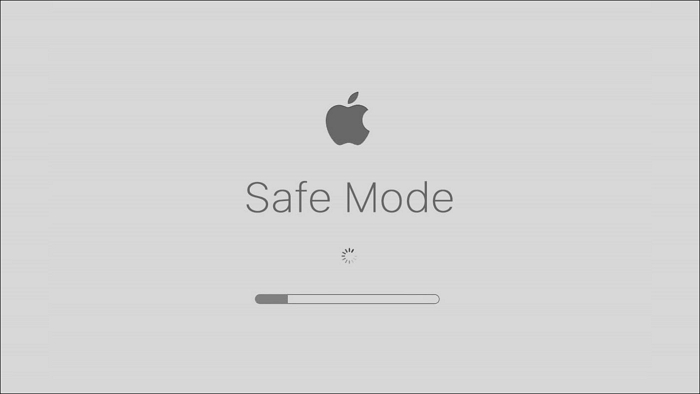
Step 1. Boot your Mac. Hold the Shift key immediately when your Mac starts.
Step 2. Release the key when you see the Apple logo. Your screen's upper-right corner should display "Safe Boot."
Step 3. Following that, clear your Trash and restart your Mac as usual.
Fix 3. Force empty Mac Trash with the option key
If you cannot open the Trash folder to erase everything inside, you can initiate the Option key to empty the Trash without unfolding it. It can access certain program functions by pressing the Option key, making it possible to force empty Trash on a Mac.
- Notice:
- This is an old method for earlier Mac versions that you might like to try. Generally speaking, it will only function if your Mac is an early version than in 2015.
Step 1. Find the Trash folder on your Mac's dock, click it, and hold the icon.
Step 2. Double-click the Trash icon while holding the Option key or Option-Shift.
Step 3. Select "Empty Trash" from the list of choices.
Step 4. Confirm whether you have forced empty the Trash when you see the pop-up windows.
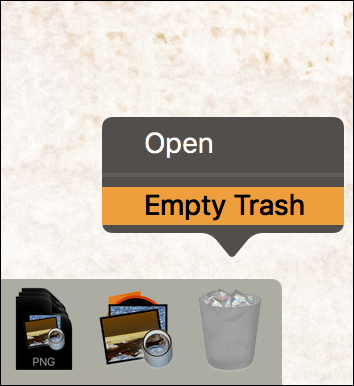
Fix 4. Utilizing a third-party tool
Try a third-party tool if you fail to force empty Trash on Mac. Before utilizing them, ensure that you have disabled the System Integrity Protection, which prevents third-party apps from accessing specific Mac capabilities. Therefore, you must first turn off SIP on Mac before utilizing a third-party tool to perform Mac forcibly empty Trash in use.
Step 1. Holding Command+R to boot your Mac in Recovery Mode.
Step 2. Release the buttons while the Apple logo appears, and then log in.
Step 3. Enter "csrutil disable; reboot" and restart your Mac in normal mode.
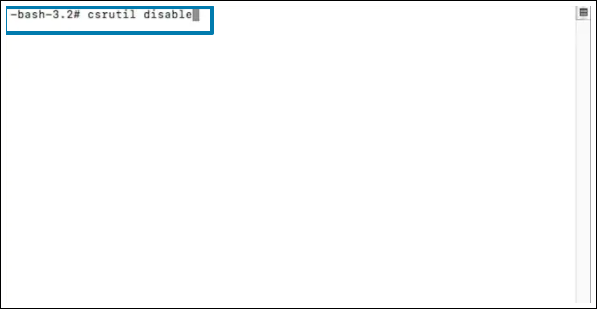
Step 4. The System Integrity Protection is temporarily disabled; now, you can empty the Trash on Mac.
Recover Permanently Deleted Files from Emptied Trash on Mac
Users might unintentionally delete files from the Trash. Consider implementing Deep Data Recovery for Mac. It is compatible with all current macOS versions and allows you to recover any damaged, erased, or missing files. The sophisticated software will recover deleted files on Mac regardless of whether you have wiped a drive or emptied the Trash. You may examine your data before restoring it, which has several scanning options.
Follow these steps to recover permanently deleted files and data.
Step 1. Scan for deleted files
Select the hard drive, external drive, or SSD where your important data & files were deleted and click "Search for lost files".
Step 2. Filter the lost files
The software will run quick and deep scans and work hard to find as many deleted files as possible on the selected volume. Filter wanted files through the "Type" and "Path" options.
Step 3. Recover deleted files
Double-click the deleted files to preview. Then, click the "Recover" button to get them back.
To Wrap It Up
Using these tried-and-true methods, the article may assist you in forcing the Mac to empty its Trash. Additionally, consider Deep Data Recovery for Mac if you accidentally erased data from the Trash. It is a powerful Mac data recovery software that will enable you to recover your deleted files and data from different resources and under varied conditions.
Force Empty Trash on Mac FAQs
Here are some other questions about forcing empty Trash on Mac.
1. Why won't my Mac let me empty the Trash?
- Files are occupied by an active program or a closed app for a background task.
- Files require repair because they are corrupted.
- Files are locked or under system protection integrity.
- Some files have been locked.
2. How do I empty Mac trash when it says "without permissions"?
In this event, you must ensure that every file is readable and writable; if not, you must adjust the file's rights to remove it. First, select Get Info from the context menu of an item in your Trash bin. Then click your user name to confirm the file permissions and change the permissions option to "Read & Write." You will notice "Sharing & Permissions."
3. How do I empty Mac trash when the "disk is full"?
If you see the error message "The process can't be finished because the disk is full," you are advised to restart your Mac in Safe Mode and empty the Trash once more rather than backing up, erasing, and reinstalling.
4. Failed to force empty Trash on Mac?
Due to many reasons, you may fail to Force empty your Trash on Mac. Nevertheless, following the methods to repair your macOS.
- Restart Mac in safe mode.
- Check virus invasion and repair your system files.
- Repair the drive before emptying the Trash.
Related Articles
- How to Find External Hard Drive on Mac In Case It's Working but Not Showing Up
- MacOS Comparison: Monterey vs Big Sur
- Move to Trash Shortcut on Mac with Three Sets
- How to Recover Unsaved/Deleted Sketch Files on Mac [4 Tips for Sketch Users]